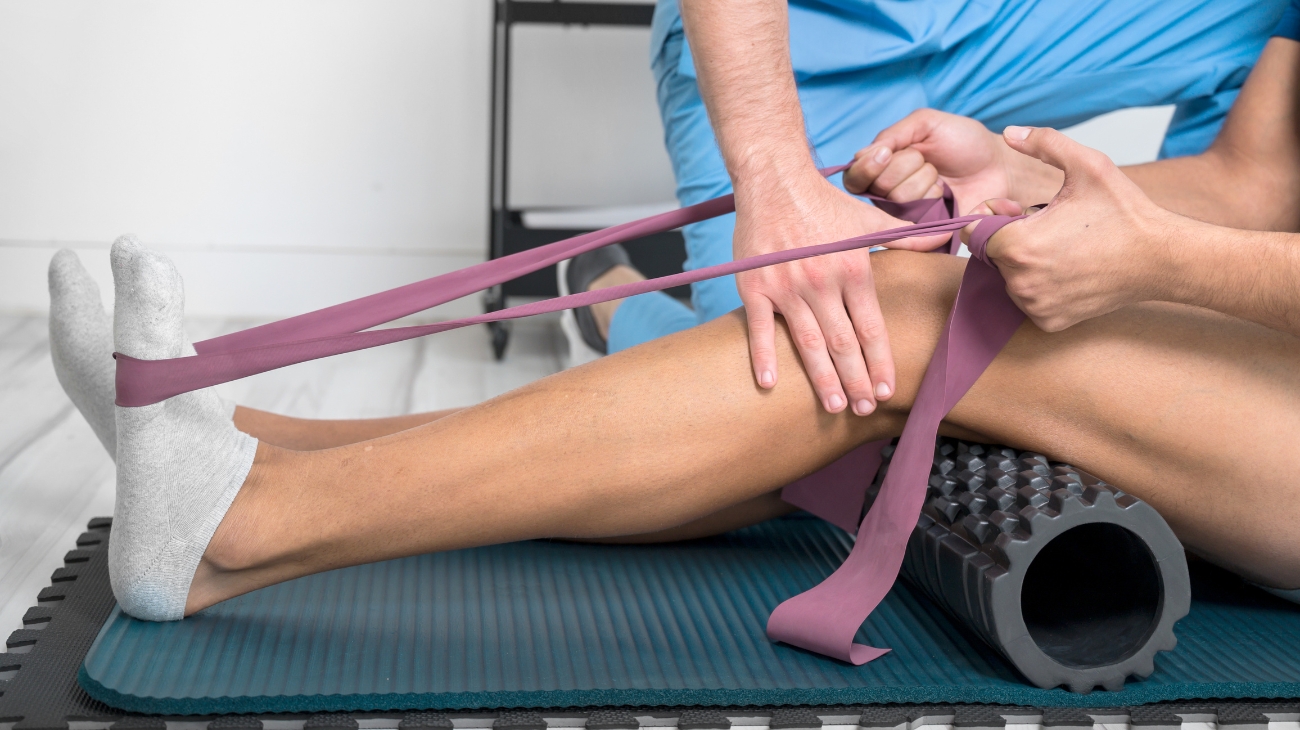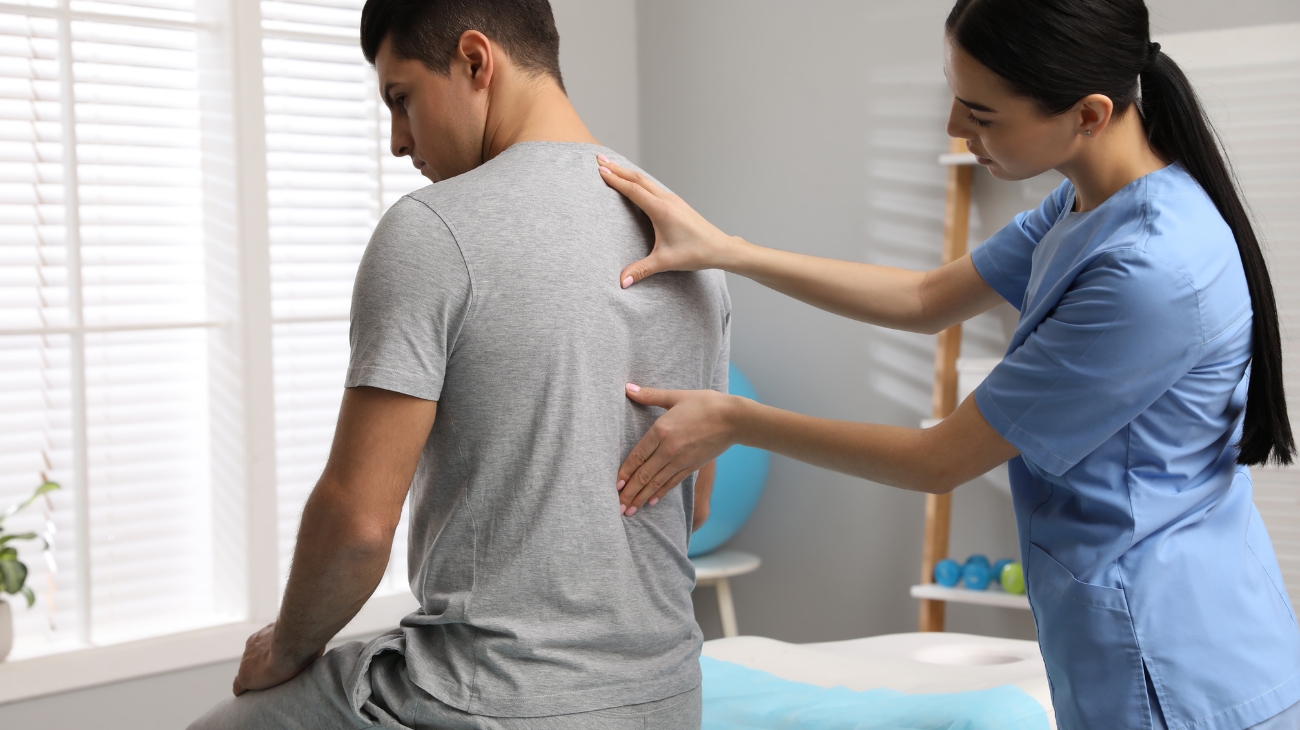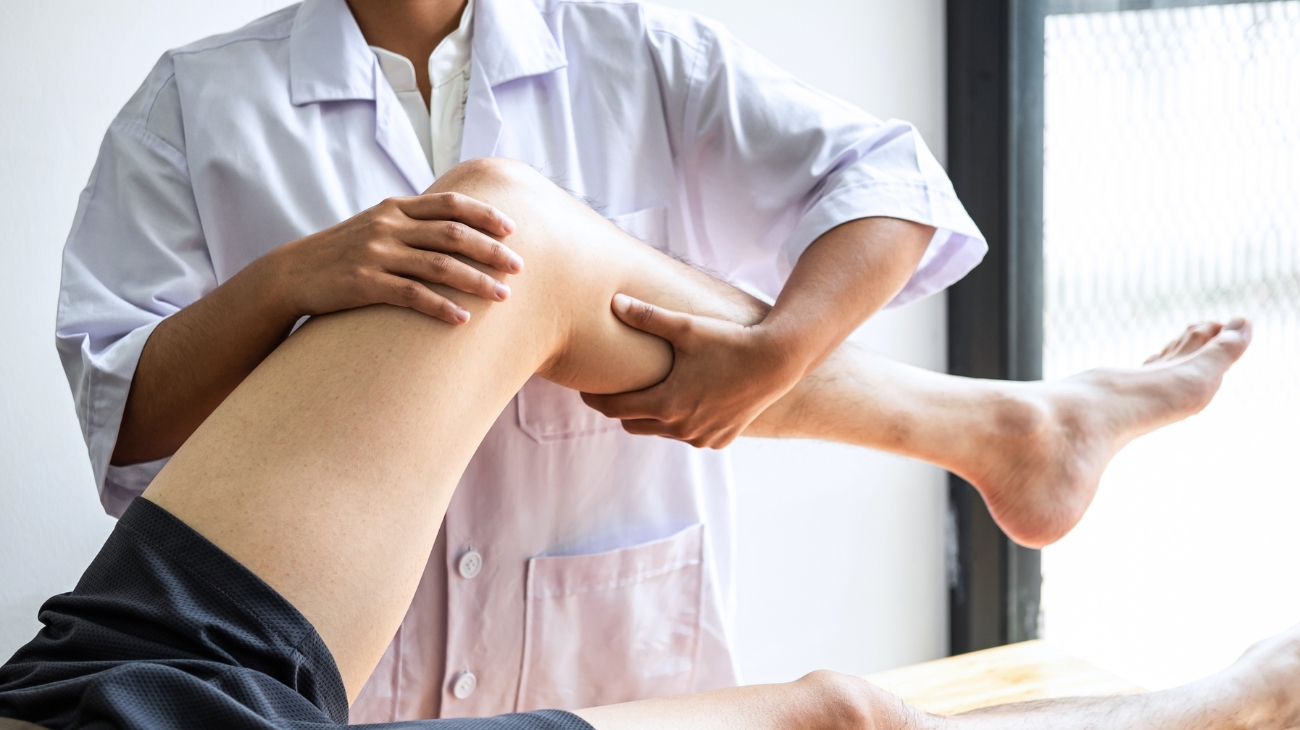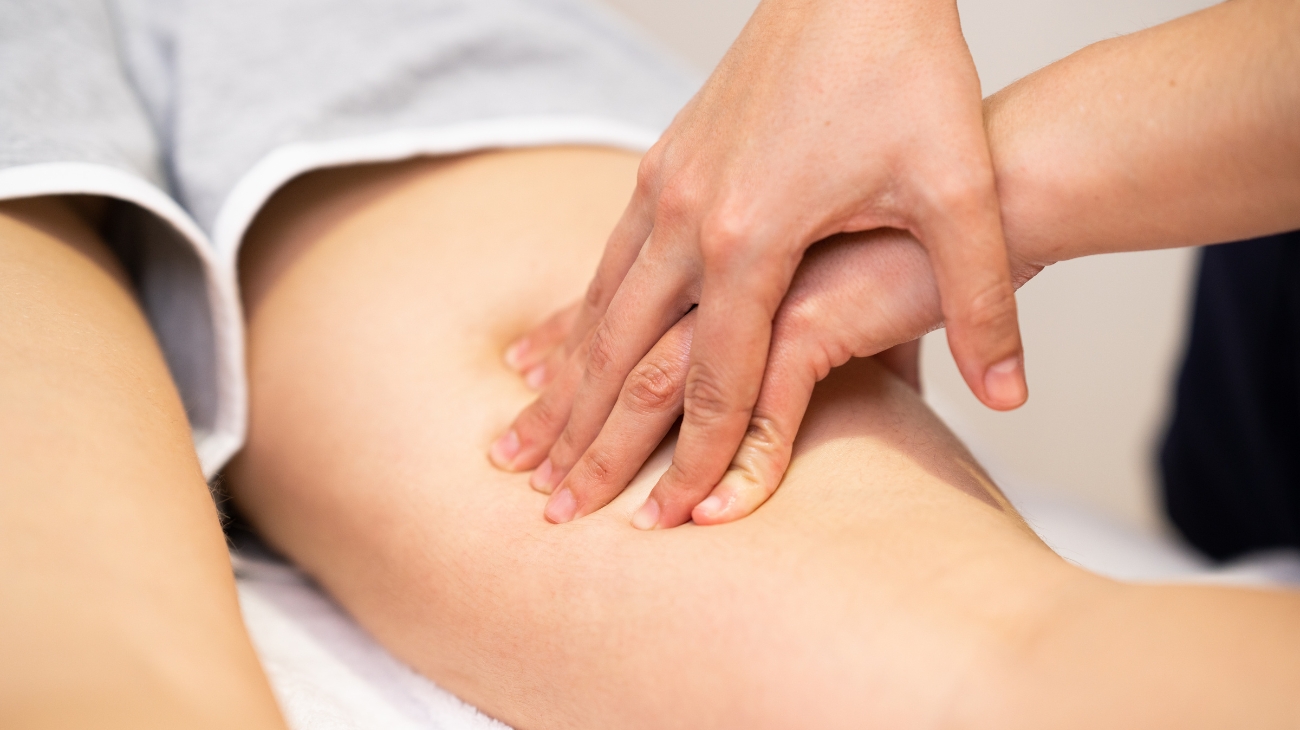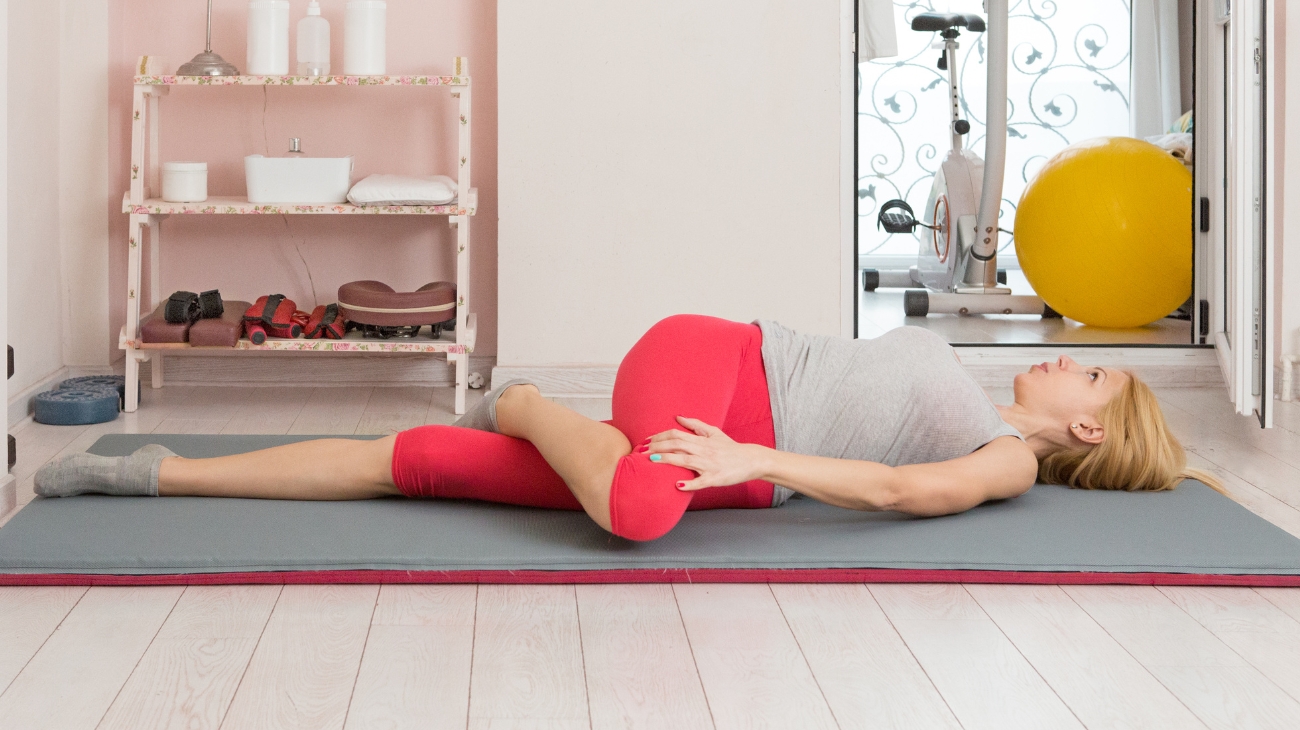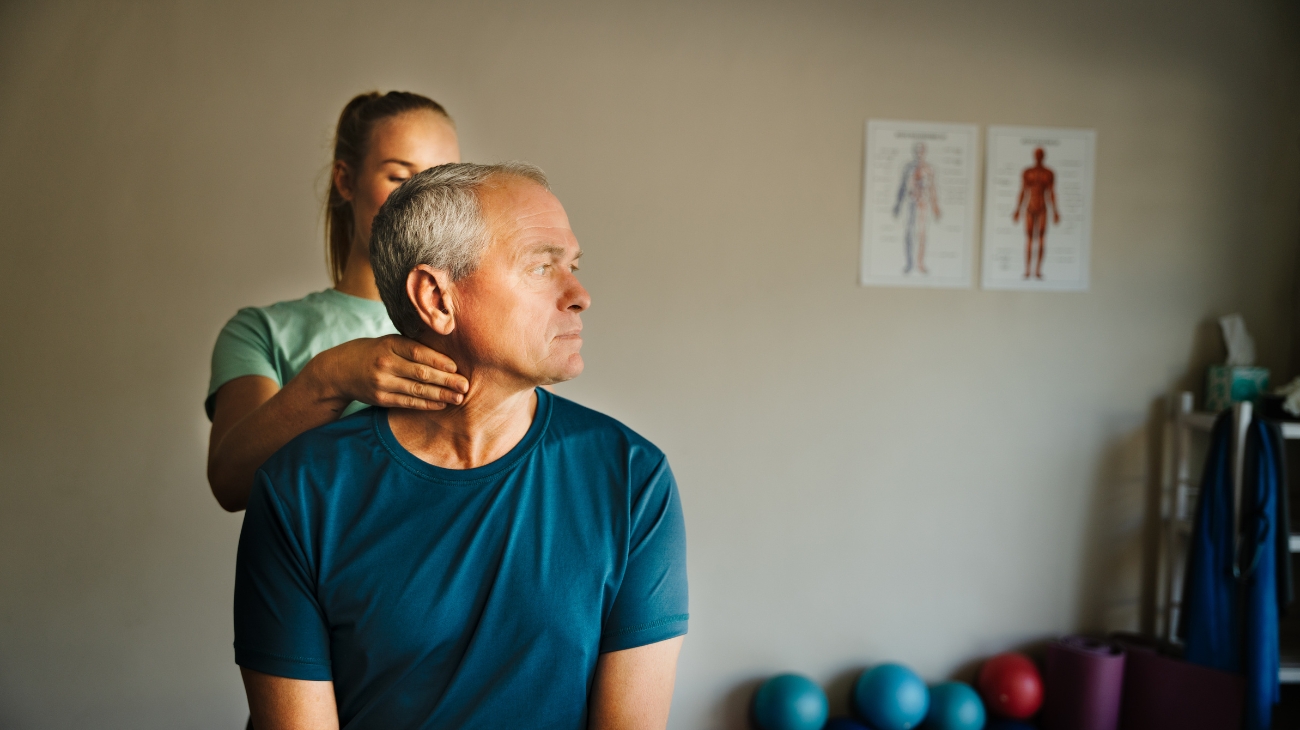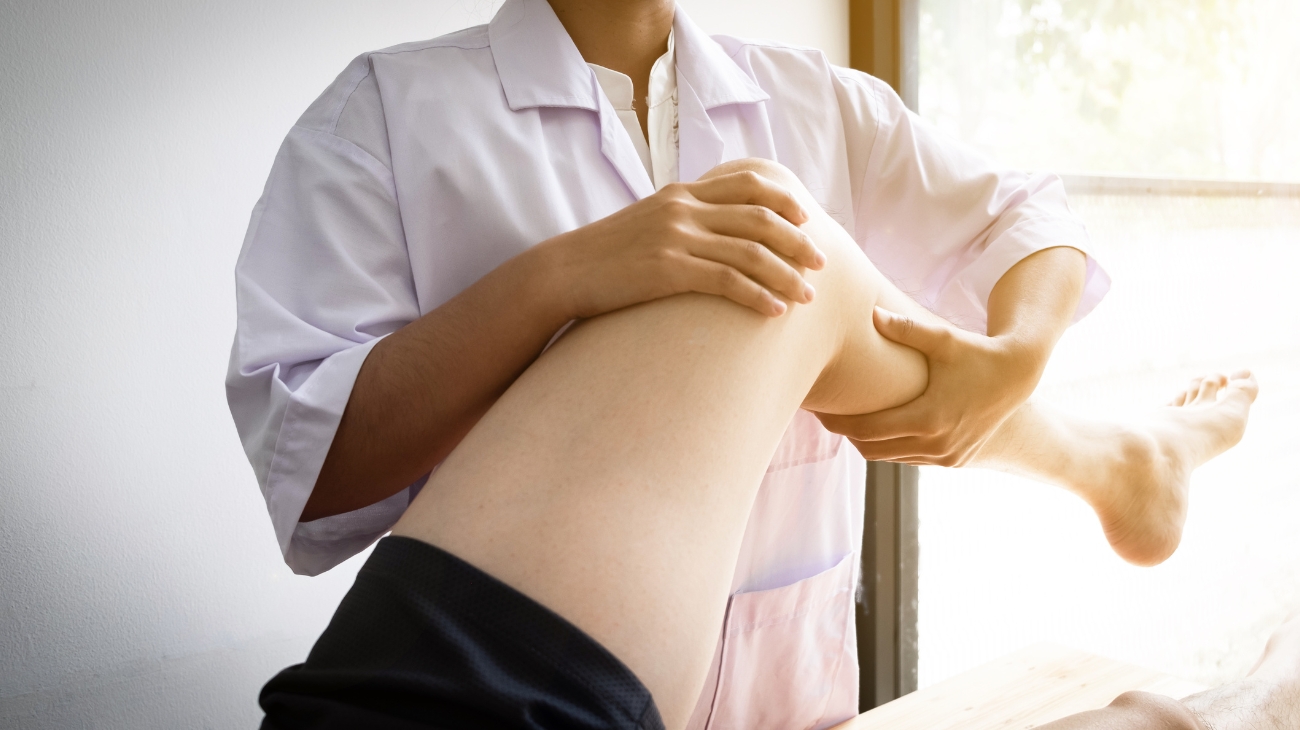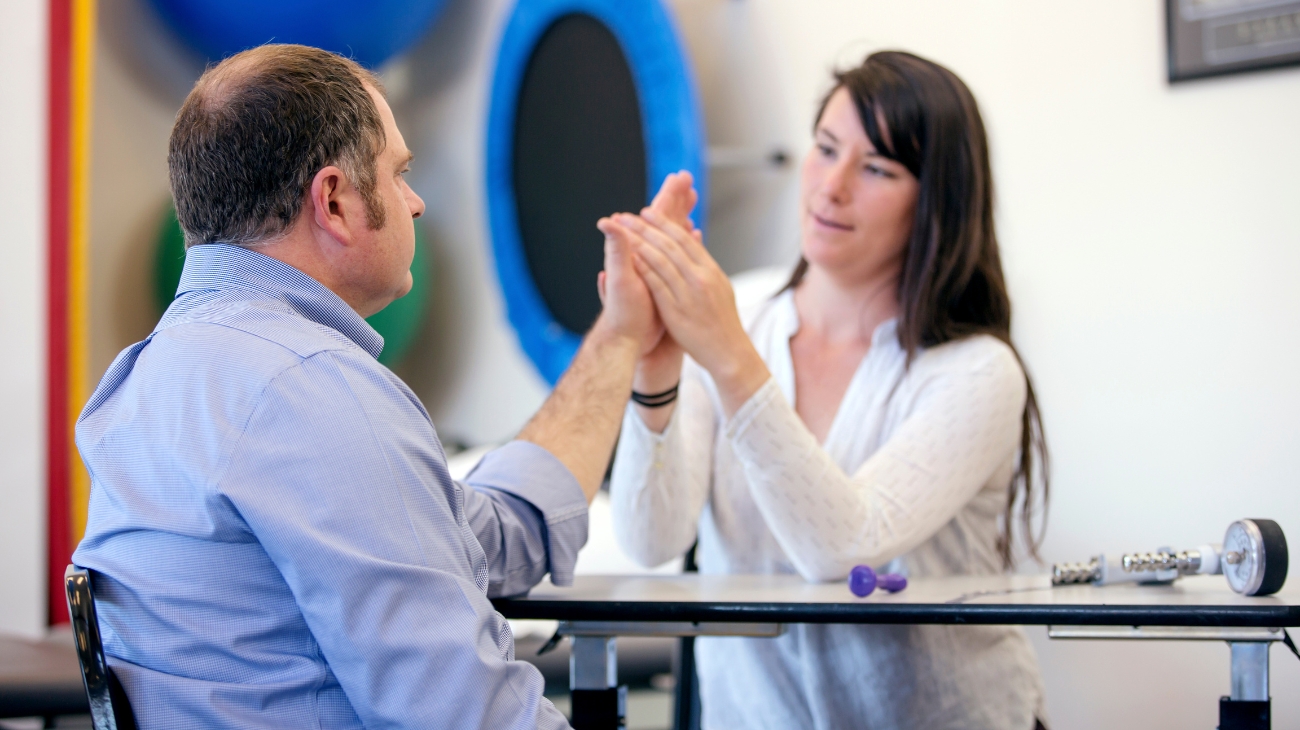It is crucial to know the best exercises for lower back and lumbar rehabilitation and pain relief as lower back pain is a prevalent condition that can significantly impact a person's daily life. The lower back or lumbar region bears the weight of the upper body and is therefore susceptible to injury and strain, leading to pain and discomfort.
Rehabilitation and mobility exercises can help relieve pain, improve function, and prevent further injury to the lower back. Targeted exercises that focus on strengthening the muscles of the lower back, abdomen, and legs can improve stability and reduce the pressure on the spine, which can alleviate pain and improve mobility.
Best lower back rehab and mobility exercises
Regular exercise can also improve flexibility and range of motion, reduce stiffness, and correct posture, which can prevent future injuries and improve overall quality of life. By strengthening the muscles, rehabilitation exercises can help reduce the risk of future injuries, allowing individuals to maintain an active lifestyle. It is essential to consult a Manual Physical Therapist or healthcare provider before starting any exercise program, as each person's condition is unique, and proper evaluation and personalized treatment are essential for effective rehabilitation and pain relief.
1 - Bird Dog (Bands)
The Bird Dog exercise with elastic bands is a great way to strengthen your core, improve balance, and engage various muscle groups:
- Start on your hands and knees, with your wrists aligned under your shoulders and your knees under your hips.
- Place an elastic band under your palms and hook it around your feet.
- Begin by extending your right arm straight forward while simultaneously extending your left leg straight back.
- Hold this position briefly, focusing on stability and balance.
- Return to the starting position, then switch to your left arm and right leg.
Muscles involved:
- Core muscles: Engage the rectus abdominis, obliques, and transverse abdominis.
- Lower back muscles: Work the erector spinae.
- Glutes: Both the gluteus maximus and gluteus medius are activated.
- Shoulder and upper back muscles: The trapezius, deltoids, and rhomboids are engaged.
2 - Glute bridge (Bands)
The Glute Bridge exercise with elastic bands is an effective way to target and strengthen your gluteal muscles:
- Lie on your back with your knees bent and feet flat on the floor. Place an elastic band just above your knees.
- Keep your arms by your sides, palms facing down, and press your feet into the floor.
- Engage your core and, while exhaling, lift your hips off the ground until your body forms a straight line from shoulders to knees. Squeeze your glutes at the top.
- Hold the bridge position for a moment, maintaining tension on the elastic band.
- Lower your hips back to the ground while inhaling.
Muscles involved:
- Gluteus maximus: This is the primary muscle worked during the exercise.
- Hamstrings: They assist in hip extension.
- Core muscles: Engage to stabilize the spine and pelvis.
- Hip adductors: These muscles work to keep the knees in line with the band.
3 - Seated spinal twist
The Seated Spinal Twist is a yoga-inspired exercise that enhances spinal mobility and stretches the torso:
- Begin by sitting on the floor with your legs extended.
- Bend your right knee and cross it over your left leg, placing your right foot flat on the floor next to your left thigh.
- Inhale, sit up straight, and extend your spine.
- Exhale and twist your torso to the right, placing your left elbow on the outside of your right knee. Use your left hand as support behind you.
- Gently rotate your head and neck to look over your right shoulder, deepening the twist.
- Hold the position for 20-30 seconds, breathing deeply.
- Return to the center and repeat the twist on the other side.
Muscles involved:
- External and internal obliques: These muscles aid in spinal rotation.
- Erector spinae: They help stabilize and extend the spine.
- Quadratus lumborum: This muscle contributes to lateral flexion and spinal stability.
4 - Trunk Rotation
The Trunk Rotation exercise is designed to improve spinal mobility and engage the core muscles:
- Begin by sitting on the floor with your legs extended.
- Bend your knees and place your feet flat on the floor.
- Sit up straight and extend your arms in front of you, keeping them at chest level, palms together.
- Inhale, engage your core, and maintain an upright posture.
- Exhale and slowly rotate your torso to one side while keeping your hips facing forward. Your hands should follow the rotation.
- Hold the stretched position for a moment.
- Inhale and return to the center.
- Exhale and repeat the rotation on the other side.
Muscles involved:
- Internal and external obliques: These muscles facilitate trunk rotation and provide stability.
- Erector spinae: They help maintain an upright posture and control the movement.
- Rectus abdominis: This muscle group supports the core and assists in the rotation.
5 - Cat Stretch (Bands)
The Cat Stretch with elastic bands is a beneficial exercise for spinal mobility and flexibility:
- Begin on your hands and knees, with the elastic band anchored securely around a stable support.
- Hold one end of the band in each hand, with your hands positioned under your shoulders.
- Inhale and maintain a neutral spine.
- Exhale, tuck your chin to your chest, and round your back toward the ceiling, engaging your abdominal muscles.
- Simultaneously, pull on the elastic band to add resistance to the stretch, gently stretching your spine further.
- Hold this rounded position for a moment to feel the stretch along your spine.
- Inhale, return to the neutral position, and release the tension in the band.
Muscles involved:
- Erector spinae: These muscles help control spinal movement and provide stability.
- Abdominals: They engage to facilitate the rounding of the back.
- Trapezius and rhomboids: These muscles in the upper back help control shoulder blade movement during the stretch.
6 - Sphinx Cat Camel
The Sphinx Cat Camel exercise is an effective way to improve spinal flexibility and reduce lower back tension:
- Begin in a tabletop position on your hands and knees, with your wrists under your shoulders and knees under your hips.
- Inhale and arch your back, lifting your head and tailbone towards the ceiling, creating the "Camel" position.
- Exhale and round your back, tucking your chin to your chest, and drawing your spine up towards the ceiling, creating the "Cat" position.
- Inhale and return to the neutral "Sphinx" position, which resembles a gentle extension of the lower back.
- Repeat these movements smoothly for a set number of repetitions.
Muscles involved:
- Erector spinae: These muscles support the spine and are engaged during both extension and flexion.
- Abdominals: They contract during the "Cat" position to round the spine.
- Trapezius and rhomboids: These muscles assist in controlling scapular movement during the exercise.
- Neck muscles: Engaged during the "Camel" and "Cat" positions for head movement.
7 - Planks
The Plank exercise is a fundamental core-strengthening exercise that also engages various muscle groups throughout the body:
- Begin in a push-up position with your elbows directly beneath your shoulders and your toes on the ground.
- Engage your core muscles, glutes, and legs to maintain a straight line from your head to your heels.
- Avoid sagging your hips or raising them too high.
- Keep your neck in a neutral position, looking down at the floor.
- Hold the plank for 20-30 seconds initially and gradually increase the duration as you get stronger.
- Repeat for 2-3 sets.
Muscles involved:
- Rectus Abdominis: These muscles stabilize the spine and help maintain the plank position.
- Transverse Abdominis: This deep core muscle provides support and stability.
- Obliques: Internal and external oblique muscles assist in maintaining proper alignment.
- Erector Spinae: These muscles along the spine help stabilize the back.
- Gluteus Maximus: These muscles in the buttocks engage to maintain hip alignment.
- Quadriceps: Muscles in the front of the thigh work to support the legs.
8 - Cow & Dog Stretch
The Cow & Dog Stretch, often incorporated into yoga routines, is an effective exercise for improving spinal flexibility, core strength, and shoulder mobility:
- Begin in a tabletop position on your hands and knees, with your wrists under your shoulders and knees under your hips.
- Inhale as you arch your back, lifting your head and tailbone toward the ceiling, creating the "Cow" position.
- Exhale and transition into the "Dog" position by rounding your back, tucking your chin to your chest, and pressing your palms into the floor, creating an inverted "V" shape.
- Flow between these positions, inhaling into "Cow" and exhaling into "Dog," keeping the movements fluid and controlled.
Muscles involved:
- Erector spinae: Engaged to support the spine during both the "Cow" and "Dog" positions.
- Abdominals: Activated during the "Dog" position to stabilize the core.
- Shoulder and chest muscles: Work during the "Dog" position for shoulder mobility.
- Hip flexors and quadriceps: Engaged during the "Dog" position when extending the hips and knees.
9 - Trunk Stability Arm Leg Lift
The Trunk Stability Arm Leg Lift is a valuable exercise for enhancing core strength, balance, and coordination:
- Begin in a tabletop position on your hands and knees, ensuring your wrists are under your shoulders and knees under your hips.
- Simultaneously lift your right arm and left leg while maintaining a neutral spine. Extend them until they are in line with your body.
- Hold this position for a few seconds, engaging your core and glutes for stability.
- Return your arm and leg to the starting position and repeat on the opposite side with the left arm and right leg.
Muscles involved:
- Transverse abdominis: Stabilizes the core to prevent excessive rotation or lateral movement.
- Erector spinae: Supports the spine and maintains an upright posture.
- Gluteus maximus: Engages to lift and stabilize the leg.
- Rhomboids and trapezius: Stabilize and control the movement of the lifted arm.
- Shoulder muscles: Aid in supporting and balancing the raised arm.
- Quadratus lumborum: Supports lateral stability and spinal alignment.
10 - Nerve Glide Sciatic
The exercise for sciatic nerve slippage, while lying on the floor, aims to gently mobilize the sciatic nerve to alleviate discomfort and improve nerve mobility:
- Begin by lying on your back with your legs extended.
- Slowly raise one leg, keeping it straight, until you feel a gentle stretch. Flex your foot to activate the dorsiflexors.
- Gently point and flex your foot while keeping your leg raised. This motion should be slow and controlled.
- Repeat this ankle movement for 20-30 seconds while focusing on feeling a slight pull or "slippage" along the sciatic nerve.
- Lower your leg and switch to the other side, repeating the exercise.
Muscles involved:
Muscles involved are minimal in this exercise as it primarily targets the sciatic nerve and surrounding connective tissues.
Best products for lower back pain relief
Bestseller
-
Acupressure Mat and Pillow (Black/Gray)
$49.95 -
Acupressure Mat and Pillow (Green/Navy)
$49.95 -
Acupressure Mat and Pillow (Pink/Bordeaux)
$49.95 -
Acupressure Pillow (Black/Gray)
$29.46 -
Acupressure Pillow (Green/Navy)
$29.46 -
Acupressure Pillow (Pink/Bordeaux)
$29.46 -
Back Support Belt (Black)
$34.95 -
Back Support Belt (Green)
$34.95 -
Back Support Belt (Pink)
$34.95 -
Heating Pad for Microwave Classic Bottle Shaped (Hearts)
$19.95 -
Heating Pad for Microwave Classic Bottle Shaped (Oxford)
$19.95 -
Heating Pad for Microwave Classic Bottle Shaped (Sport)
$19.95 -
High Density Foam Roller for Muscle (Black/Gray)
$29.95 -
High Density Foam Roller for Muscle (Green/Navy)
$29.95 -
High Density Foam Roller for Muscle (Pink/Bordeaux)
$29.95 -
Ice Massage Roller Ball (Black)
$39.95 -
Ice Massage Roller Ball (Green)
$39.95 -
Ice Massage Roller Ball (Pink)
$39.95 -
Microwave Heating Pad for Back Pain Relief (Extra Large) (Hearts)
$29.95 -
Microwave Heating Pad for Back Pain Relief (Extra Large) (Oxford)
$29.95 -
Microwave Heating Pad for Back Pain Relief (Extra Large) (Sport)
$29.95 -
Microwave Heating Pad for Neck & Shoulder Pain Relief (Hearts)
$24.95 -
Microwave Heating Pad for Neck & Shoulder Pain Relief (Oxford)
$24.95 -
Microwave Heating Pad for Neck & Shoulder Pain Relief (Sport)
$24.95 -
Microwaveable Heating Pad for Pain Relief (Hearts)
$19.95 -
Microwaveable Heating Pad for Pain Relief (Oxford)
$19.95 -
Microwaveable Heating Pad for Pain Relief (Sport)
$19.95 -
Pack 2 In 1 Foam Roller High + Soft Density (Black/Gray)
$29.95 -
Pack 2 In 1 Foam Roller High + Soft Density (Green/Navy)
$29.95 -
Pack 2 In 1 Foam Roller High + Soft Density (Pink/Bordeaux)
$29.95 -
Sacroiliac Support Belt (Black)
$24.95 -
Sacroiliac Support Belt (Green)
$24.95 -
Sacroiliac Support Belt (Pink)
$24.95 -
Soft Density Foam Roller for Recovery (Black)
$29.95 -
Soft Density Foam Roller for Recovery (Green)
$29.95 -
Soft Density Foam Roller for Recovery (Pink)
$29.95 -
Trigger Point Massage Stick (Black)
$14.95 -
Trigger Point Massage Stick (Green)
$14.95 -
Trigger Point Massage Stick (Pink)
$14.95
Most common lower back injuries
The most common lower back injuries are:
- Lumbar Strain: This injury occurs when the muscles or ligaments in the lower back are stretched or torn due to sudden or repetitive movement.
- Lumbar Disc Herniation: This occurs when the soft tissue between the vertebrae in the lower back ruptures, leading to pressure on the spinal cord or nerves.
- Degenerative Disc Disease: This is a condition where the discs in the lower back break down over time, leading to pain and reduced mobility.
- Sciatica: This occurs when the sciatic nerve, which runs from the lower back to the legs, is compressed or irritated, leading to pain, numbness, or weakness in the legs.
- Spinal Stenosis: This is a narrowing of the spinal canal, which can put pressure on the spinal cord or nerves, leading to pain, numbness, or weakness in the legs.
- Spondylolisthesis: This is a condition where one vertebra in the lower back slips out of place, leading to pressure on the nerves and pain.
Benefits of rehab exercises for lower back injuries
Some benefits of performing rehabilitation and mobility exercises for lower back injuries include:
- Pain Relief: Proper exercises and rehabilitation techniques can help reduce lower back pain by strengthening the muscles and improving flexibility.
- Improved Functionality: Regular exercise and rehabilitation can improve the range of motion in the lower back, allowing patients to perform daily activities with greater ease.
- Increased Strength and Stability: Exercises targeting the lower back muscles can improve their strength and stability, which can prevent future injuries and improve posture.
- Better Overall Health: Regular exercise and rehabilitation can improve overall health and well-being by reducing stress, improving sleep quality, and promoting weight loss.
- Improved Quality of Life: By reducing pain and improving functionality, patients can enjoy a better quality of life and engage in the activities they love without discomfort or limitations.
F.A.Q: Frequently asked questions
References
- Henchoz, Y., & So, A. K. L. (2008). Exercise and nonspecific low back pain: a literature review. Joint Bone Spine, 75(5), 533-539. https://www.sciencedirect.com/science/article/abs/pii/S1297319X08002005
- Hayden, J. A., Van Tulder, M. W., Malmivaara, A. V., & Koes, B. W. (2005). Meta-analysis: exercise therapy for nonspecific low back pain. Annals of internal medicine, 142(9), 765-775. https://www.acpjournals.org/doi/abs/10.7326/0003-4819-142-9-200505030-00013
- Van Middelkoop, M., Rubinstein, S. M., Verhagen, A. P., Ostelo, R. W., Koes, B. W., & van Tulder, M. W. (2010). Exercise therapy for chronic nonspecific low-back pain. Best practice & research Clinical rheumatology, 24(2), 193-204. https://www.sciencedirect.com/science/article/abs/pii/S1521694210000033
- McGill, S. M. (1998). Low back exercises: evidence for improving exercise regimens. Physical therapy, 78(7), 754-765. https://academic.oup.com/ptj/article/78/7/754/2633318
- Patti, A., Bianco, A., Paoli, A., Messina, G., Montalto, M. A., Bellafiore, M., ... & Palma, A. (2015). Effects of Pilates exercise programs in people with chronic low back pain: a systematic review. Medicine, 94(4). https://www.ncbi.nlm.nih.gov/pmc/articles/PMC4602949/
- Hicks, G. E., Fritz, J. M., Delitto, A., & McGill, S. M. (2005). Preliminary development of a clinical prediction rule for determining which patients with low back pain will respond to a stabilization exercise program. Archives of physical medicine and rehabilitation, 86(9), 1753-1762. https://www.sciencedirect.com/science/article/abs/pii/S0003999305003606
- Andersson, G. B. (1998). Epidemiology of low back pain. Acta Orthopaedica Scandinavica, 69(sup281), 28-31. https://www.tandfonline.com/doi/pdf/10.1080/17453674.1998.11744790
- McGill, S. M. (2001). Low back stability: from formal description to issues for performance and rehabilitation. Exercise and sport sciences reviews, 29(1), 26-31. https://journals.lww.com/acsm-essr/Fulltext/2001/01000/Low_Back_Stability__From_Formal_Description_to.6.aspx
- Adams, M. A. (2004). Biomechanics of back pain. Acupuncture in medicine, 22(4), 178-188. https://journals.sagepub.com/doi/abs/10.1136/aim.22.4.178?journalCode=aima
- Frymoyer, J. W., POPE, M. H., COSTANZA, M. C., Rosen, J. C., GOGGIN, J. E., & WILDER, D. G. (1980). Epidemiologic studies of low-back pain. Spine, 5(5), 419-423. https://journals.lww.com/spinejournal/Abstract/1980/09000/Epidemiologic_Studies_of_Low_Back_Pain.5.aspx


























































